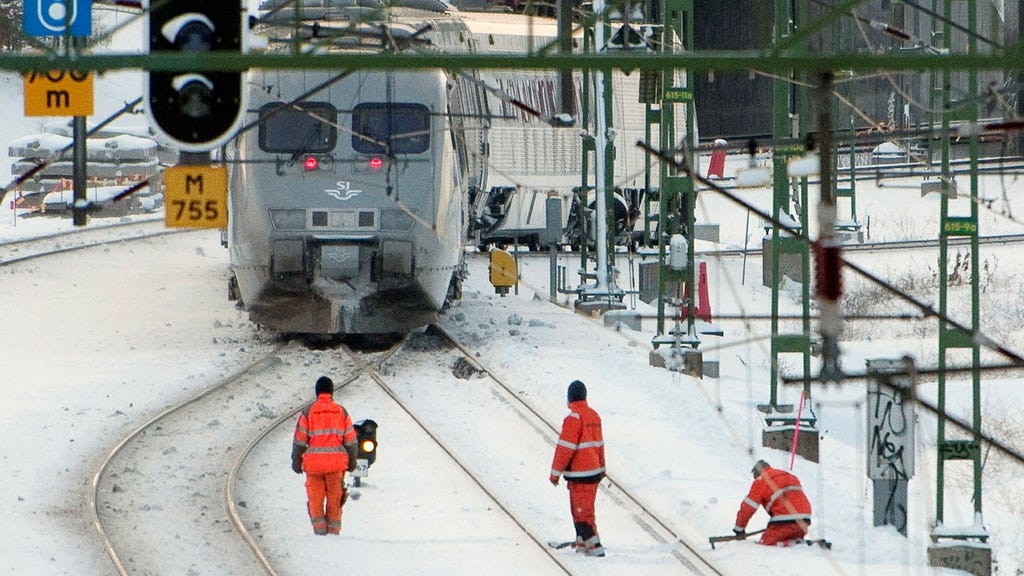The falling snow brought transportation to a standstill, mirroring the plummeting morale of stranded travelers. Anton Eklund, a resident of Axvall, Sweden, voiced his frustration in a disheartening New Year’s resolution: no more train travel. His recent journey, a mere 150 kilometers between Örebro and Skövde, devolved into chaos due to ice on a power line, highlighting the systemic failures within the Swedish rail system and the broader issue of inadequate communication during disruptions. Eklund’s experience, detailed in a letter to the newspaper Dagens Nyheter (DN), resonates with countless others who have faced similar ordeals on trains, buses, subways, and even in airports. The common thread is not just the logistical nightmare of delays, overcrowding, and chaotic transfers, but the pervasive lack of clear, accurate, and timely information.
Eklund’s account paints a picture of bewildered passengers left in informational limbo. He describes a scene of uncertainty and frustration, with SJ, the Swedish national railway operator, failing to provide updates or estimated departure times. Customer service representatives were equally clueless about the arrival of replacement buses, and when information was finally offered, it proved inaccurate. This lack of reliable information created a ripple effect of anxiety, impacting even basic decisions like purchasing food. The fear of a sudden departure, coupled with the distrust engendered by previous misinformation, left passengers hesitant to invest in even a simple meal. This scenario underscores the psychological toll of uncertainty, transforming a temporary inconvenience into a stressful ordeal.
The core issue is not merely the disruption itself, but the informational vacuum that amplifies its impact. A well-known psychological principle dictates that people can endure almost any hardship, even extreme inconvenience, if they understand the reasons behind it. A humorous hypothetical scenario illustrates this point: imagine passengers stranded for hours being informed that the delay is due to escaped venomous spiders, including one that has bitten the train driver. Even this bizarre explanation, coupled with a small gesture of compensation like free coffee, would likely be met with more understanding than silence and uncertainty. It is the unknown that breeds anxiety and frustration.
The absence of information allows imagination to run wild, often magnifying the problem far beyond its actual scale. Rumors spread like wildfire, filling the void with exaggerated scenarios and compounding the existing stress. In the absence of official updates, the stranded traveler’s mind conjures images of snake-infested replacement trains and indefinite delays, turning a manageable inconvenience into a personal nightmare. This highlights the crucial role of clear and timely communication in mitigating the psychological impact of disruptions.
The question then arises: ”How hard can it be to provide timely and accurate information?” The answer is complex. While no organization can realistically provide every detail to every customer in every situation, there is a fundamental responsibility to ensure that basic information is readily available. This becomes even more critical in times of crisis, when individuals are expected to take personal responsibility and stay informed. This expectation, however, hinges on the availability of accurate and accessible information. Government agencies, healthcare providers, and transportation operators all share the responsibility of ensuring that communication channels are robust and effective, particularly during emergencies.
The case of Anton Eklund serves as a microcosm of a larger issue: the critical importance of communication in managing disruptions and mitigating their negative impact. The failure to provide timely and accurate information not only exacerbates the practical challenges of the disruption itself, but also significantly amplifies the psychological stress experienced by those affected. It is not just about keeping people informed; it is about providing reassurance, managing expectations, and enabling individuals to make informed decisions. In the end, the cost of silence far outweighs the effort required to maintain effective communication. The lesson is clear: invest in communication, or pay the price in frustration, anxiety, and eroded public trust.














